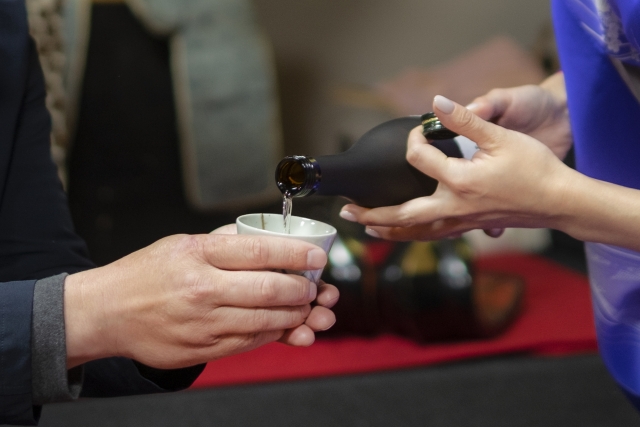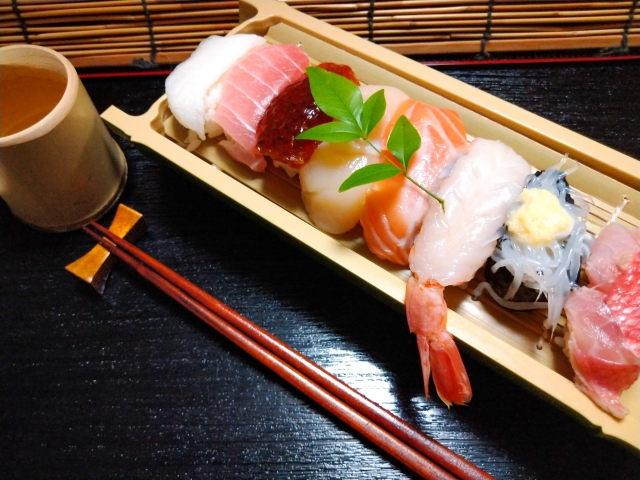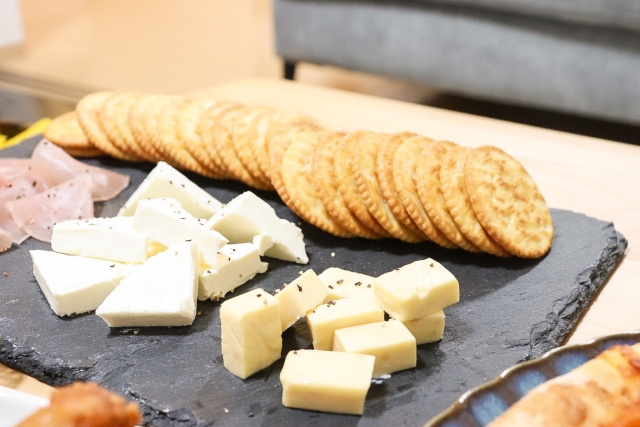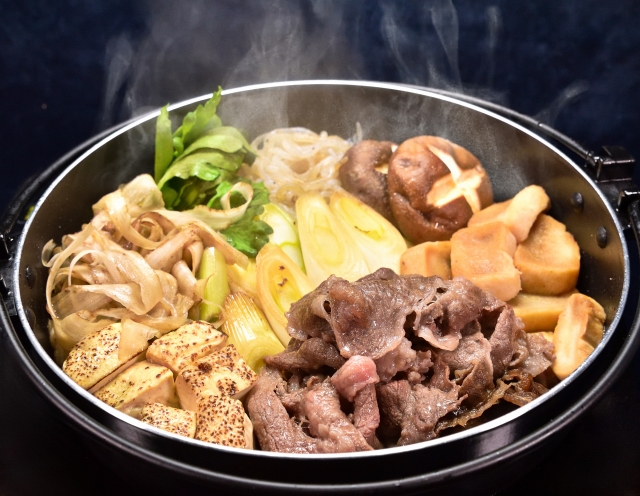
Sake, Japan's iconic rice wine, offers a rich tapestry of flavors and traditions that can elevate your drinking experience. Whether you're a novice or a seasoned sake enthusiast, understanding the best ways to enjoy this versatile beverage can enhance its flavors and your appreciation of its cultural significance. This guide will walk you through the delicious, correct, and varied methods of enjoying sake, along with the etiquette surrounding its consumption in Japan.
Understanding Sake: Temperature, Vessels, and Types
Temperature: Hot or Cold?
The enjoyment of sake greatly depends on its temperature. Here's a quick rundown:
- Cold (5-10°C/41-50°F): Ideal for ginjo and daiginjo types, enhancing their floral and fruity notes.
- Room Temperature (15-20°C/59-68°F): Suits most sake types, offering a balanced taste.
- Warm (45-55°C/113-131°F): Best for junmai and honjozo sake, highlighting their umami and soothing warmth.
Vessels: From Ochoko to Masu

The choice of vessel can also influence your sake experience:
- Ochoko: A small cup, perfect for savoring sake slowly.
- Guinomi: A larger cup for those who prefer a generous serving.
- Masu: A square wooden box traditionally used for sake, adding a subtle woody aroma.
Sake Types: A Brief Overview
- Junmai: Pure rice sake, rich and full-bodied.
- Ginjo: Made with highly polished rice, offering a lighter, more fragrant profile.
- Daiginjo: The pinnacle of sake brewing, with the highest polish ratio, featuring delicate and complex flavors.
How to Drink Sake: Etiquette and Practices

Pouring Sake: The Art of Sharing
The ritual of pouring sake for others is a deeply rooted tradition in Japanese culture, embodying respect, camaraderie, and the spirit of hospitality. When engaging in this practice, it's essential to observe the following nuances to enhance the experience for both the pourer and the recipient:
- Use Both Hands: Holding the sake bottle with both hands while pouring is a sign of respect and care. This gesture shows the pourer's dedication to serving their companion and is considered a basic yet profound etiquette in Japanese dining.
- Watch the Rim: Be mindful not to let the bottle touch the rim of the cup or glass. This practice is not only hygienic but also demonstrates attention to detail and respect for the sake itself.
- Gauge Your Pour: Fill the cup approximately 80% full. Overpouring can be seen as careless, while underpouring may suggest a lack of generosity. Finding the right balance shows thoughtfulness and respect for the person you're serving.
- Serve from the Right Side: If possible, serve sake from the right side of the person being served. This tradition, while not strictly observed in casual settings, adds a layer of formality and respect to more traditional or formal gatherings.
- Anticipate the Need: A considerate host or dining companion is always observant, ready to refill a cup before it's completely empty. This proactive approach ensures that the flow of sake and conversation remains uninterrupted, fostering a warm and inviting atmosphere.
Savoring Sake: Tips for Tasting
Tasting sake is an art form that allows the drinker to fully appreciate the depth and breadth of flavors that sake has to offer. To truly savor sake, consider these tips:
- Inspect the Color and Clarity: Before tasting, observe the sake's color and clarity in the glass. Clear, pristine sake suggests purity and refinement, while slight variations in color can indicate aging or specific brewing techniques.
- Swirl Gently: Like wine, gently swirling sake in the glass can release its aromatic compounds. This action helps to volatilize the sake's fragrances, making them more perceptible and enhancing the overall tasting experience.
- Inhale Deeply: Bring the glass to your nose and take a deep breath in. Sake can have a range of aromas, from fruity and floral to earthy and umami-rich. Identifying these scents can prime your palate and heighten your anticipation of the first sip.
- Take a Small Sip: Start with a small sip to allow the sake to coat your mouth. This initial taste helps to acclimate your palate to the sake's temperature and texture, making it easier to detect subtler flavors and nuances.
- Let It Linger: After swallowing, take a moment to appreciate the aftertaste or "finish." High-quality sake will have a complex finish that evolves and lingers, offering a final testament to its craftsmanship.
- Compare Notes: If tasting multiple types of sake, take notes on the differences in flavor, aroma, and mouthfeel. This practice can enhance your understanding and appreciation of sake's diversity, as well as help you identify your personal preferences.
By incorporating these detailed practices into your sake pouring and tasting rituals, you can elevate your experience and deepen your appreciation for this exquisite Japanese beverage.
Food Pairings: Enhancing Flavors
Sake pairs wonderfully with a wide range of foods, thanks to its umami-rich profile. Here are a few suggestions:
- Seafood: Complements the freshness of fish and shellfish.
- Grilled Meats: The smoky flavors pair well with sake's umami.
- Cheese: A surprisingly delightful pairing, especially with fruitier sake varieties.
My Best Ways to Drink Sake
Personal Recommendation: Sushi and Sake, A Heavenly Pair!!

When it comes to enhancing the flavors of both food and drink, there's hardly a pairing more divine than sushi with sake. As a connoisseur and lover of Japanese cuisine, I personally vouch for the unparalleled experience of enjoying these two together. Here's why this combination stands out as a celestial match:
Sushi, with its delicate flavors and fresh, nuanced taste profiles, pairs exquisitely with sake, a beverage known for its ability to complement a wide range of dishes. The secret to maximizing this pairing lies in the serving temperature of the sake. I recommend enjoying sake at room temperature or slightly chilled when dining on sushi. This ensures that the subtle flavors and aromas of both the sushi and sake can be appreciated fully, without one overpowering the other.
The cool, clean taste of slightly chilled sake cuts through the richness of the fish, enhancing its flavor without overwhelming its natural taste. Conversely, room temperature sake brings out the umami in sushi, creating a harmonious blend of flavors that dance on the palate. Together, sushi and sake create a synergy that can only be described as a taste of heaven on earth. The experience is not just about the taste but the appreciation of the craftsmanship behind both the dish and the drink.
In this pairing, every bite of sushi and sip of sake tells a story of tradition, art, and passion. It's a testament to the beauty of Japanese culinary practices and the perfection they strive for. So, the next time you're indulging in the exquisite world of Japanese cuisine, remember to pair your sushi with sake at the ideal temperature. It's a combination that truly embodies the phrase "a match made in heaven."
Seasonal Sake Pairings: From Sparkling Summer Sips to Warm Winter Welcomes
Navigating through the seasons, our palates crave different flavors and textures that harmonize with the weather outside. As a sake connoisseur, I'm thrilled to share two of my top seasonal sake pairings that promise to elevate your dining experience, whether basking in the summer sun or cozying up against the winter chill.
Summer Bliss: Chilled Sparkling Sake with Cheese and Crackers

Imagine a warm summer evening, the golden sunset painting the sky, and a refreshing glass of sparkling sake in hand, paired perfectly with a selection of cheese and crackers. This pairing is not just a drink; it's an experience. The effervescence of chilled sparkling sake adds a lively touch to your summer gatherings, cutting through the creaminess of the cheese while complementing the crispiness of the crackers. The slight sweetness and carbonation of the sake bring out the nuanced flavors of the cheese, making for a delightful contrast that dances on the palate. This pairing is ideal for those lazy summer days spent lounging on the patio, offering a light yet satisfying treat that refreshes and delights in equal measure.
Winter Warmth: Hot Sake with Sukiyaki or Hot Pot

As the temperature drops and the nights draw in, the comfort of a steaming hot pot or a succulent sukiyaki becomes increasingly irresistible. To accompany these hearty winter dishes, there is nothing more fitting than a flask of warm sake, known as "kanzake." The warmth of the sake not only complements the rich flavors of the meat and vegetables but also introduces a cozy warmth that radiates from within, perfect for those cold winter evenings. The gentle heat of the sake enhances the savory umami of the dishes, creating a harmonious blend that wraps you in culinary comfort. This pairing is a celebration of warmth and comfort, bringing people together around the table to share in the joy of good food and good company, making each meal an occasion to remember.
These seasonal sake pairings offer a glimpse into the versatility of sake and its ability to enhance the dining experience year-round. Whether you're seeking a refreshing summer pairing or a comforting winter combination, sake has the unique ability to complement and elevate your meal, making every sip a journey through the seasons.
Bonus Edition: A Modern Retreat with Sake, Snacks, and Streaming

The Ultimate Solo Night In: Netflix, Chips, and Affordable Sake
In the hustle and bustle of modern life, finding moments of personal retreat can be a challenge. Yet, there's a simple, somewhat guilty pleasure that stands as a beacon of relaxation and self-indulgence: spending the night before a holiday alone, room dimmed, with nothing but the glow of Netflix, a bag of potato chips within arm's reach, and a bottle of reasonably priced sake to sip until the world fades away.
This unique blend of modern digital entertainment and traditional Japanese drinking is not just a way to unwind; it's an art form in its own right. Picture this: You're curled up on the couch, the outside world and its demands a distant memory. Each episode that rolls by is accompanied by the comforting crunch of chips and the smooth, soothing embrace of sake. The choice of a budget-friendly sake is key here—it's approachable, unpretentious, and perfectly suited for a night dedicated to pleasure, not ceremony.
This pairing transcends the conventional; it's a testament to the joys of simplicity and the beauty of enjoying one's own company. As each sip of sake warms you from the inside out, the stresses of daily life begin to dissolve, replaced by a contented buzz and the anticipation of what the next episode—or the next pour—might bring.
In this setting, sake becomes more than just a drink; it's a companion for the journey through binge-worthy series and cinematic adventures. The potato chips, with their salty crispness, are the perfect foil to the subtle complexities of the sake, making each bite and sip an act of rebellious self-care.
So, if you're looking for an unconventional way to de-stress and indulge, consider this modern ritual. It's a reminder that sometimes, the best way to recharge and find joy is to embrace the simple pleasures life offers—sake, snacks, and the endless possibilities of streaming content. After all, in the realm of personal retreats, who says tradition can't meet modernity in the most delightful of ways?
Exploring Sake: Beyond the Basics
Seasonal Sake: Embracing Change
Just like wine, sake can be seasonal, with certain brews designed to be enjoyed at specific times of the year. Spring heralds the arrival of fresh and lively namazake (unpasteurized sake), while autumn brings robust, aged varieties to the forefront.
Sake Tasting Events: A Cultural Experience
Participating in a sake tasting event can deepen your understanding and appreciation of sake. These events offer a great opportunity to explore different types and styles, guided by experts.
Japanese Sake Rituals: A Glimpse into Tradition
In Japan, sake plays a crucial role in various ceremonies and celebrations, from Shinto rituals to New Year's festivities. Understanding these cultural contexts adds another layer to the enjoyment of sake.
In conclusion, the world of sake offers a rich palette of flavors, traditions, and experiences. Whether you prefer your sake cold, warm, or at room temperature; whether you enjoy it from an ochoko, guinomi, or masu; the key is to explore and find what suits your taste best. With a wide range of types and styles available, there's a sake out there for everyone. Dive in, experiment with different pairings, and most importantly, enjoy the journey through Japan's beloved rice wine.
